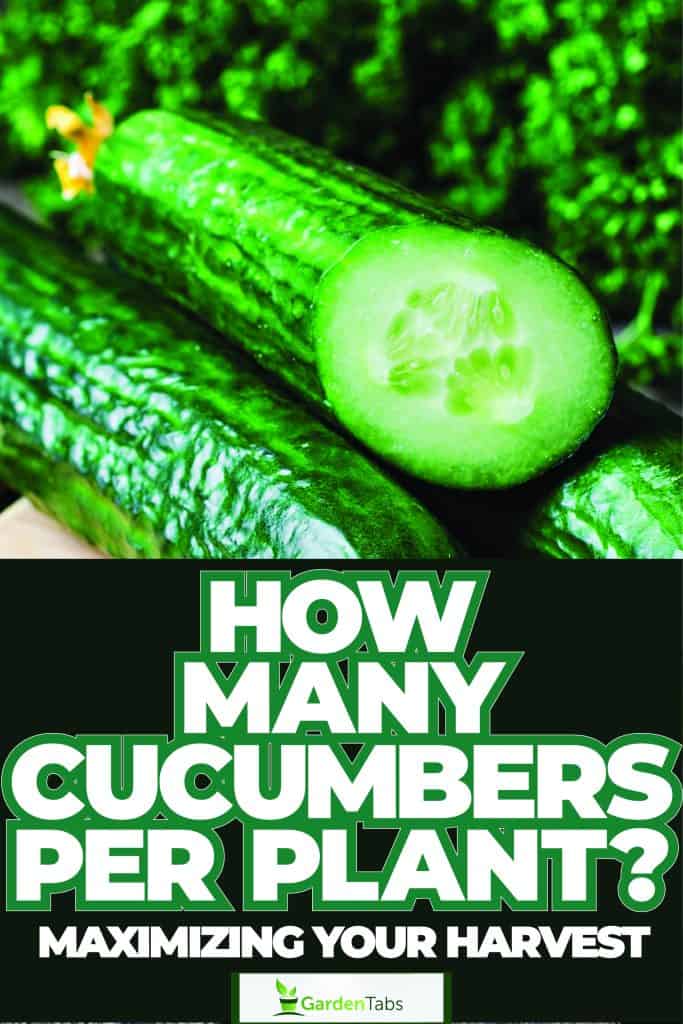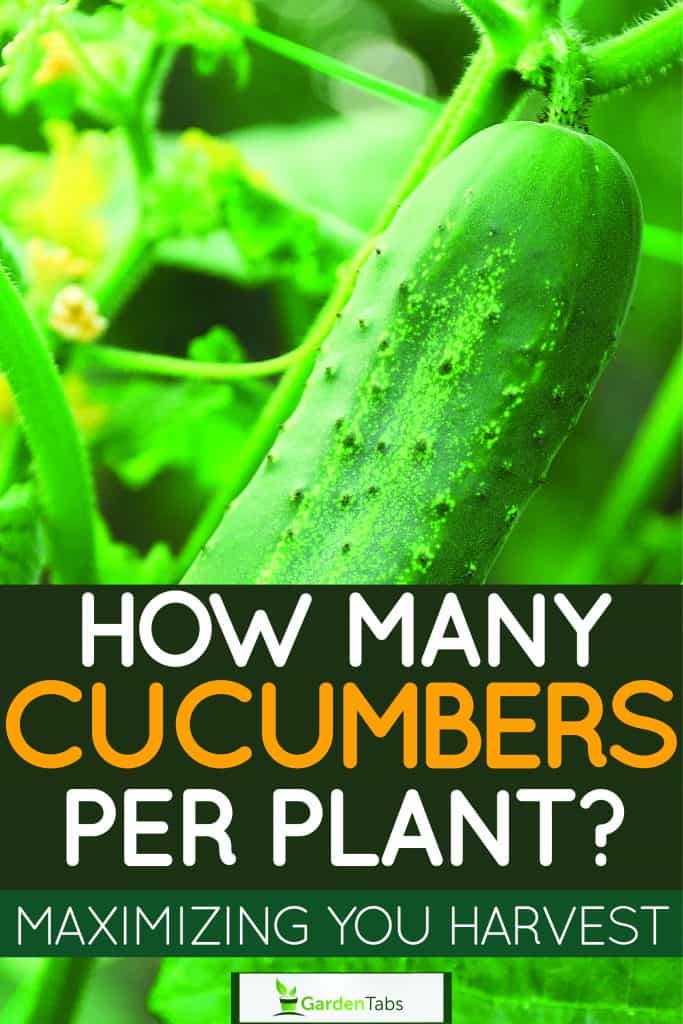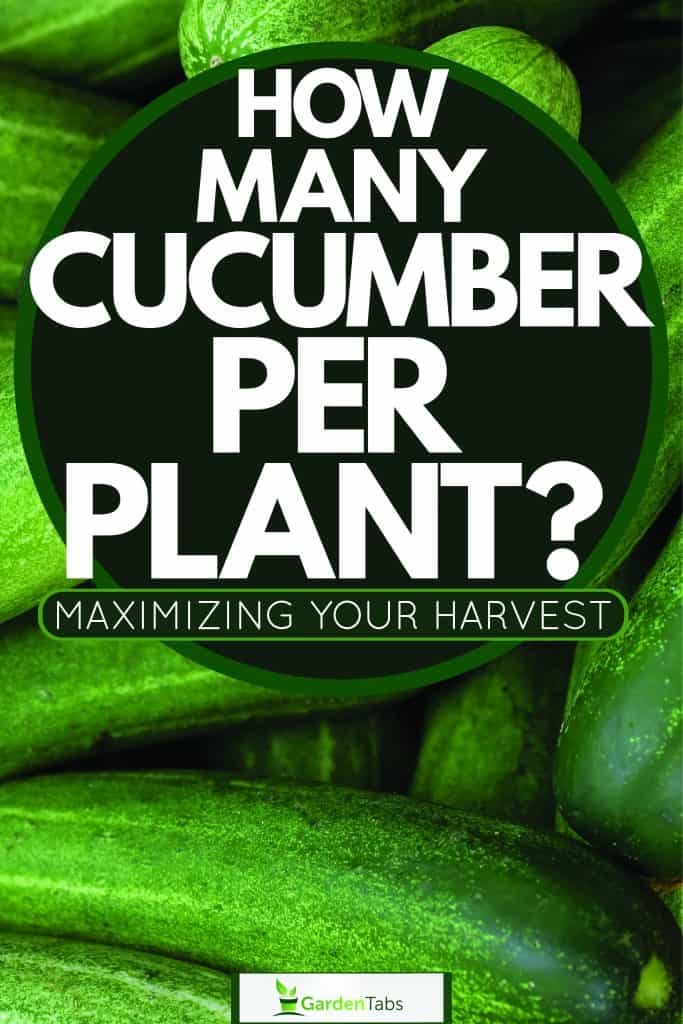Growing cucumbers in your garden can be a rewarding experience, as these versatile vegetables can be used in a variety of dishes and pickling recipes.
However, as a gardener, you might be curious about the number of cucumbers you can expect to harvest from each plant.
Knowing this information can help you plan your garden effectively and ensure that you have enough cucumbers for your needs.
In general, the number of cucumbers per plant can vary depending on the variety and growing conditions.
On average, you can expect around 10 cucumbers per plant, but this number can range from 2-15 cucumbers depending on the factors mentioned earlier.
Some heirloom varieties produce between 2-3 pounds of cucumbers per plant, while other commercially available varieties may yield up to 5 pounds of cucumbers.
According to Utah State University, the ratio is to grow 2-3 cucumber plants to be consumed by one person if they're eating it fresh.
If you're planning to can or pickle them, plant an additional 3-5 plants. This should be a sufficient amount for consumption per person.
If you're growing them in rows in a farm or garden, expect around 75-100 lbs of fruit harvest for every 100 feet growth of plants.
To optimize your cucumber harvest, consider factors such as the type of cucumber you're growing, trellising methods, and providing ideal growing conditions for the plants.
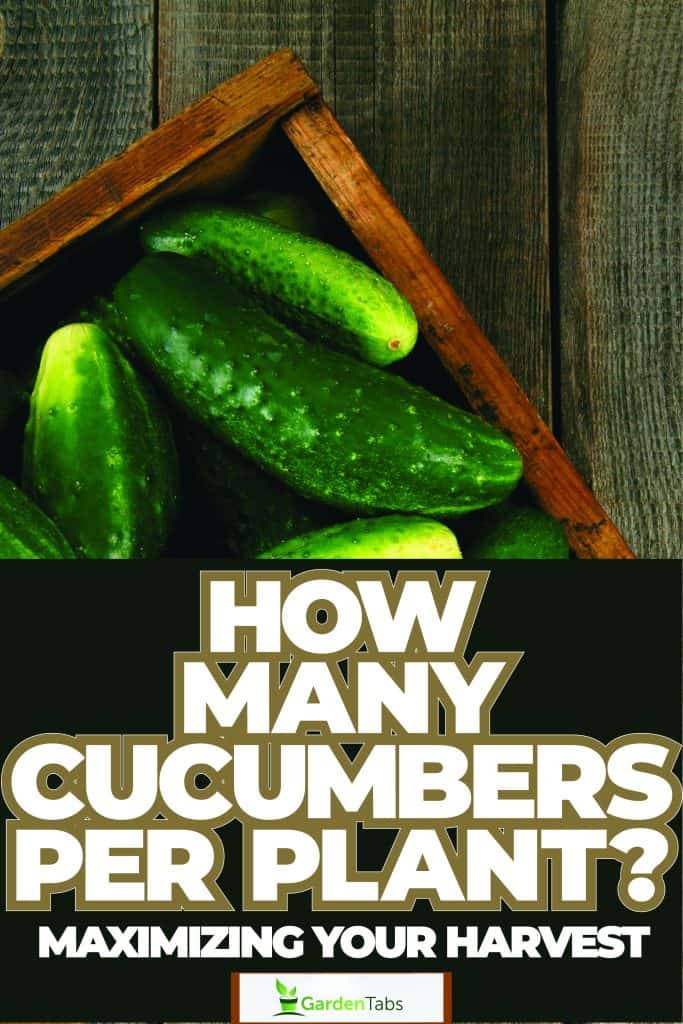
How Many Cucumbers Can You Get In One Plant?
You might be curious about the number of cucumbers you can expect to harvest from a single plant.
This number can vary depending on factors such as the type of cucumber plant, variety of seed used, and growing conditions. Here are a few points to consider:
- On average, a cucumber plant can yield about 10-15 cucumber fruits, with a total harvested weight of 2-3 pounds.
- Some cucumber varieties, such as bush cucumbers, tend to produce a lower yield per plant, while others, like vining cucumbers, have a higher yield.
- If you grow slicing cucumbers, which are larger varieties, you can expect to harvest around 10 fruits, each weighing approximately 6 ounces.
Cucumber growers have also found success in increasing their yield by adapting various gardening techniques, such as:
- Ensuring the plants receive ample sunlight, water, and proper nutrients.
- Avoiding overcrowding by giving ample space between each plant.
- Regularly inspecting for diseases, pests, and other issues that may hinder the plant's growth.
If you are considering hydroponic gardening, it's an excellent option for maximizing cucumber yield.
Hydroponically grown cucumbers tend to produce more fruits per plant due to their optimal growing conditions such as balanced nutrients, precise watering, and maximized sunlight exposure.
While specific numbers for hydroponic cucumber yield can vary, you can expect a higher yield compared to traditional soil-based gardening.
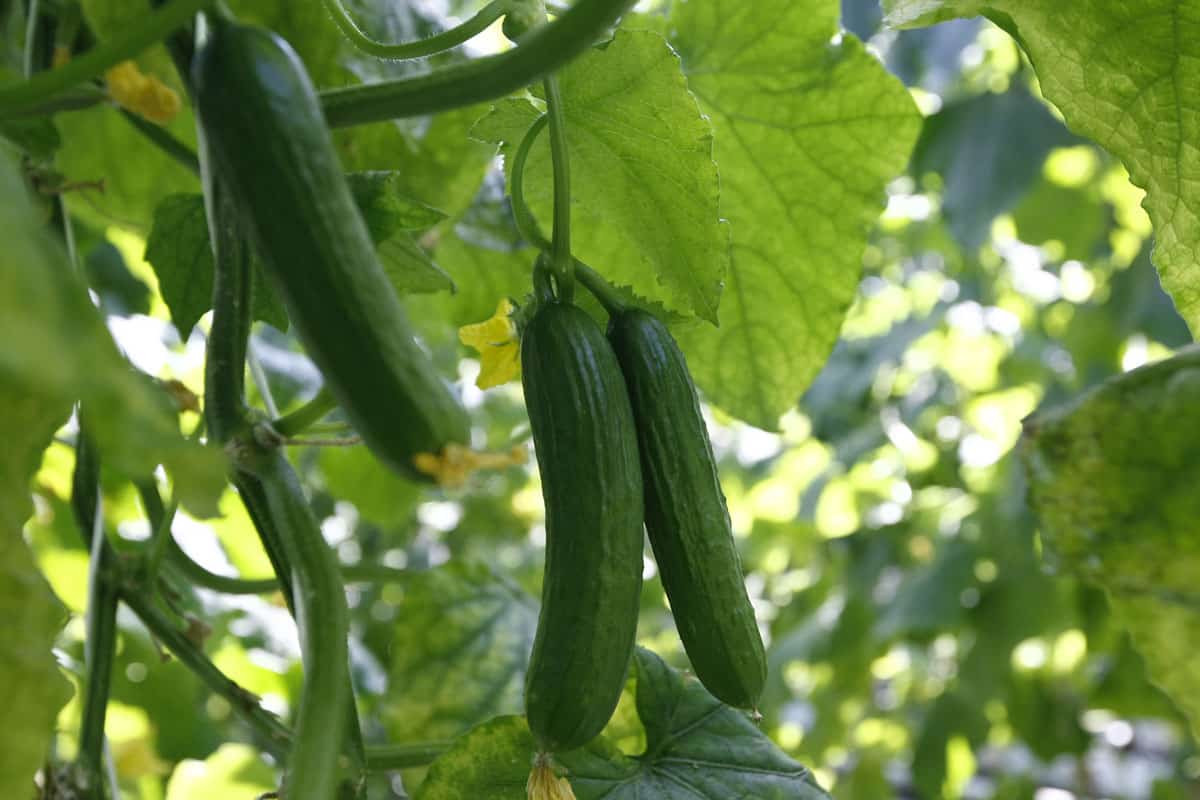
When to Harvest and How to Store Your Produce
Harvesting cucumbers at the right time allows you to enjoy the fruits in their juiciest, crunchiest state.
When to Harvest
Cucumbers can be harvested between 50-70 days after germination, and they'll continue to produce all season.
For regular slicing cucumbers, they should be about 6-8 inches long.
When harvesting dill cucumbers, aim for 4-6 inches long, and pick pickling cucumbers at 2-3 inches long.
It's always better to collect cucumbers in the early morning when it's cool.
Remember that cucumbers are best picked before their seeds become hard and are eaten when immature.
Proper Way to Harvest
When it comes time to harvest your cucumbers, use a pair of clean scissors or garden shears to cut the stem about a quarter of an inch above the fruit.
This prevents damage to the plant and ensures that the cucumber comes off cleanly.
Be gentle and cautious not to tug or pull the cucumber from the plant forcefully, as this can injure the vine, reducing your plant's ability to produce more cucumbers.
More harvesting tips here: How To Tell If Cucumbers Are Ready To Pick
How to Store Cucumbers
To keep your harvested cucumbers fresh, follow these steps:
- Wash and dry: Gently rinse the cucumbers in cool water to remove any dirt or debris, then pat them dry with a clean towel.
- Wrap in a cloth or paper towel: Lightly wrap each cucumber in a clean cloth or paper towel to help absorb excess moisture.
- Store in a plastic bag or container: Place the wrapped cucumbers inside a plastic bag or an airtight container to maintain freshness.
- Refrigerate: Store the cucumbers in the vegetable crisper drawer of your refrigerator, where they will stay fresh for up to a week.
By following these harvesting and storage tips, you'll enjoy fresh, delicious cucumbers all season long.
Growing Cucumbers in Containers
Growing cucumbers in containers is a great way to enjoy fresh, homegrown produce even if you have limited garden space.
With the right care and attention, your cucumber plants will thrive in pots and yield an impressive harvest.
To start, choose a pot that is at least 10 inches wide and deep for each cucumber plant.
If you want to grow several plants in one container, opt for one that is 20 inches in diameter and holds at least 5 gallons.
Fill your pot with high-quality potting soil and make sure there is proper drainage to prevent root rot.
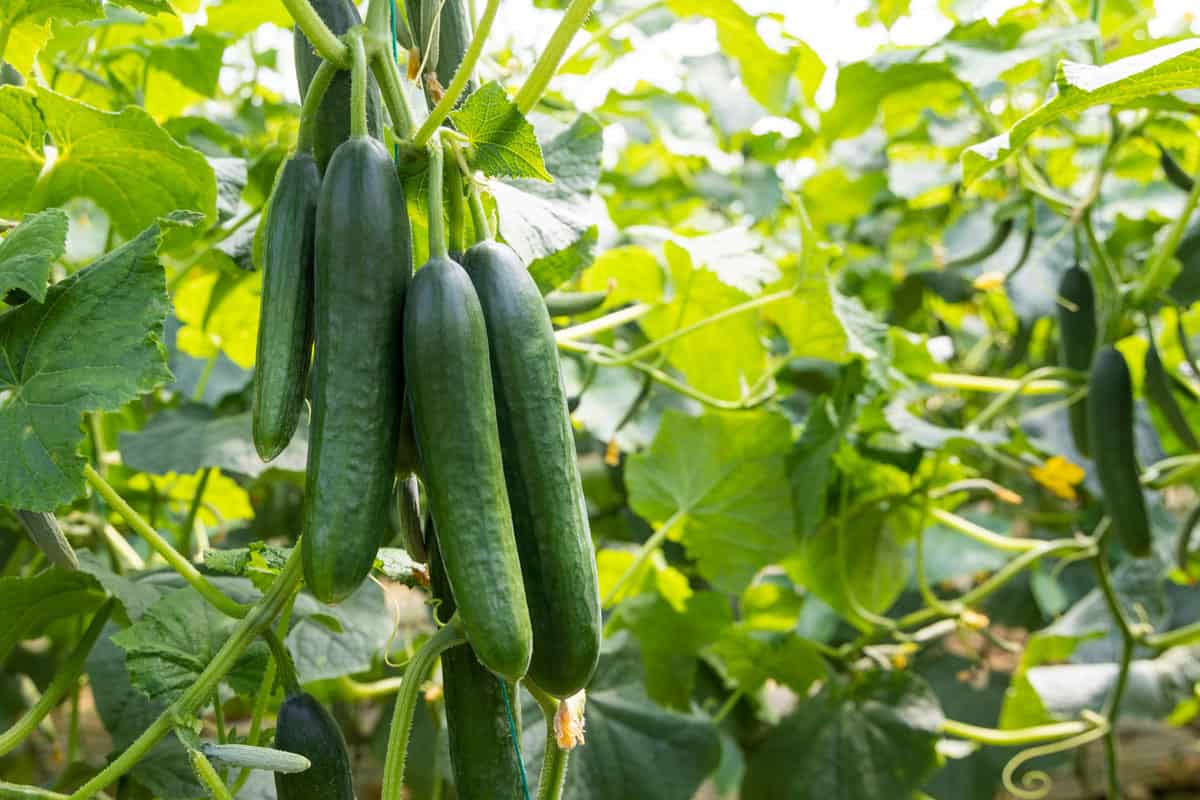
When sowing seeds, plant 3 seeds per pot, about a half inch deep.
Water the soil well and maintain consistent moisture until the seeds germinate.
Once the seedlings grow a few inches tall, thin them down to the strongest plant in each pot.
Your cucumber container garden requires at least 6-8 hours of full sun per day.
Monitor the area where you plan to place the container to ensure it gets enough sunlight.
Read here for more information on how to grow them in pots: Can Cucumbers Be Grown In Pots?
Vining and Busing Cucumbers
There are two main types of cucumber plants: vining and bush.
If you're growing vining cucumbers, provide vertical support like a lattice or tomato cage for the plants to grow upwards.
Bush cucumbers need less support, but make sure they have space to spread out.
Proper watering is crucial for successful cucumber growth.
Keep the soil consistently moist, avoiding overwatering and underwatering. Fertilize as needed, following the guidelines for your specific container and cucumber variety.
Growing Cucumbers Using Hydroponics
If you're after higher yield but you have limited space, growing cucumbers through the hydroponic method is the way to go.
Here are the steps to follow for a successful harvest.
First, select the right variety of cucumbers that are suitable for hydroponic systems.
Choosing a variety such as the English or Japanese cucumbers, which are ideal for hydroponic growing, can increase your chances of success.
To start, you'll need to germinate your cucumber seeds.
Plant your seeds about ½ inch deep in a growing medium and space them about 12 inches apart.
It's essential to use small seedlings and directly sow them individually in around 4 inches of a suitable hydroponic substrate.
Once your cucumber seedlings are established, choose a suitable hydroponic system for growing your plants.
The Dutch bucket hydroponic system is a popular option for growing cucumbers.
If you go with this system, you can grow 2 or 3 bush cucumber plants in each bucket.
For climbing cucumber vines, stick to two plants per bucket and provide a wide trellis for support.
Learn more about trellising here: Do Cucumbers Need A Trellis?
Maintaining the appropriate nutrient solution is crucial for healthy cucumber growth.
Ensure that the solution provides all the necessary nutrients, as this will directly impact the health and yield of your hydroponic cucumbers.
Here are some tips for growing hydroponic cucumbers successfully:
- Monitor the pH level of the nutrient solution regularly to maintain an optimal pH of 5.5 - 6.0.
- Maintain an ideal air temperature of 75-80°F during the day and 60-70°F at night.
- Provide 14-16 hours of bright light per day for optimum growth.
By following these guidelines, you'll be on your way to enjoying a bountiful harvest of fresh, healthy cucumbers from your very own hydroponic system.
This video below shows you how many cucumbers you can harvest from a hydroponic plant:
Providing Trellis and Support
When growing cucumbers, providing them with the right trellis and support is crucial.
It ensures that your plants have ample room to grow and thrive. Let's look at how you can properly give your cucumber plants the support they need.
First, choose a trellis that is at least 4 or 5 feet tall.
This is because cucumber vines can grow about 4-6 feet long, depending on the variety.
Using a wide trellis allows you to grow several cucumber plants side by side up the same trellis, spaced about a foot apart along the base.
When it comes to deciding which trellis to use, consider using a twine trellis or a wooden lattice.
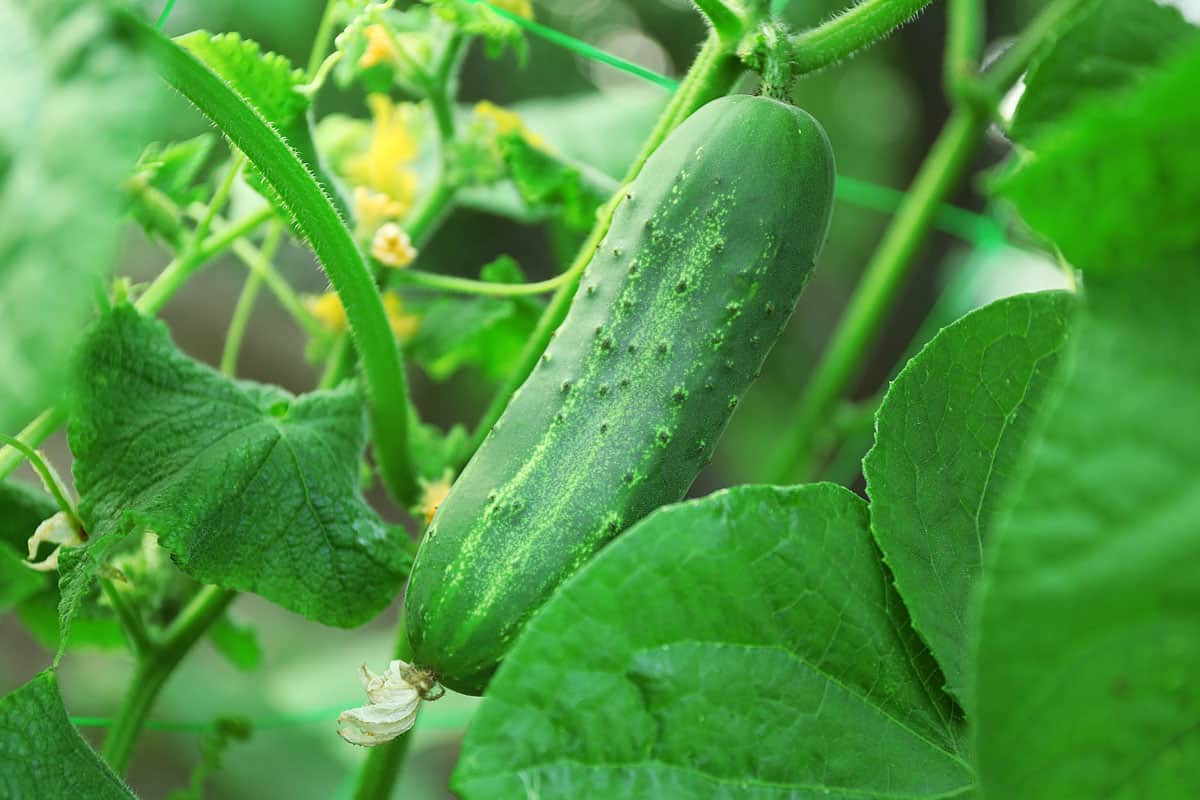
Cucumber tendrils prefer to grab onto organic and non-metallic materials, making these options ideal.
You can also opt for a wooden obelisk, as it is sturdy and provides adequate support.
Here are a few steps to follow when setting up your trellis and supporting your cucumber plants:
- Install your chosen trellis before or shortly after planting your cucumber seeds so the plants have something to climb on once they start growing.
- Attach the cucumber vines to the trellis gently once they are tall enough, directing them upward. The tendrils will do most of the work, but you can help by guiding them onto the trellis.
- Check on the vines periodically to ensure they are climbing the trellis properly, and reposition them if needed.
Supporting your cucumber plants with a trellis has several benefits, including:
- Better air circulation around the plants, reducing the risk of diseases.
- Easier harvesting, as the cucumbers will hang down and away from the plant, making them more visible.
- Increased yield, as the plants can focus their energy on producing fruit instead of sprawling.
By successfully implementing trellising and support into your garden, you'll help ensure that your cucumber plants grow strong and healthy.
Companion Planting
When planning your garden, keep in mind that incorporating companion planting can greatly benefit your cucumber plants.
Not only can you create a more biodiverse environment, but you can also help with pest control and disease prevention.
One of the best companion plants for cucumbers is beans, which can improve soil fertility by fixing nitrogen.
Peas are another excellent legume to grow with cucumbers as they share this ability.
Root vegetables like beets, carrots, and radishes are also good companion plants because they don't compete for resources and can actually help break up the soil for better cucumber root growth.
Herbs like dill and oregano benefit cucumber plants by attracting beneficial insects, while certain flowers, such as marigolds and nasturtiums, help deter pests.
Don't forget that corn makes a great companion plant for cucumbers, as the stalks can act as natural trellises for your vining cucumbers, which saves space and increases garden efficiency.
To promote healthy plant growth, avoid planting cucumbers near vegetables that may hinder their development.
For instance, keep your cucumbers away from potatoes, which could increase the risk of diseases, or aromatic vegetables like onions and peppers that may stunt cucumber growth.
Here's a quick list of some recommended companion plants for cucumbers:
- Beans
- Peas
- Corn
- Beets
- Carrots
- Radishes
- Dill
- Oregano
- Marigolds
- Nasturtiums
With thoughtful planning and attention to companion planting, you can create a homegrown garden filled with healthy, productive cucumber plants and a variety of vegetables to enjoy all season long.
Enjoy Your Harvest to the Fullest!
It's important to remember that the number of cucumbers you can harvest per plant depends on factors such as the plant variety and the growing conditions.
Remember to make the most of your cucumber harvest by consuming or preserving them in a timely manner to enjoy their flavor and nutritional benefits.
So go ahead, start planning your cucumber garden today, and discover the joy of growing your own delicious and nutritious produce!

